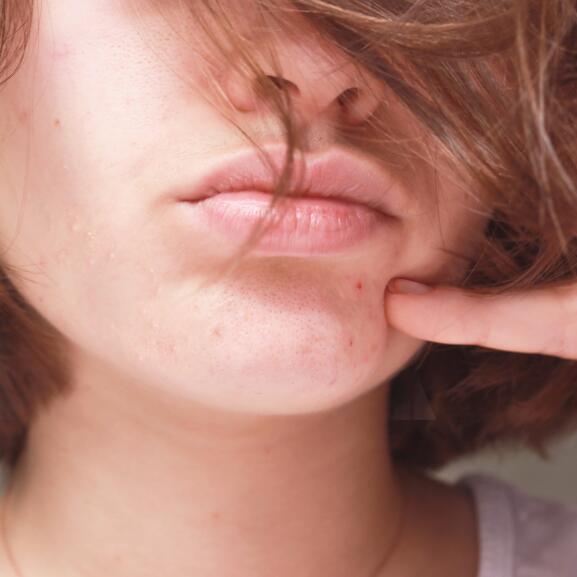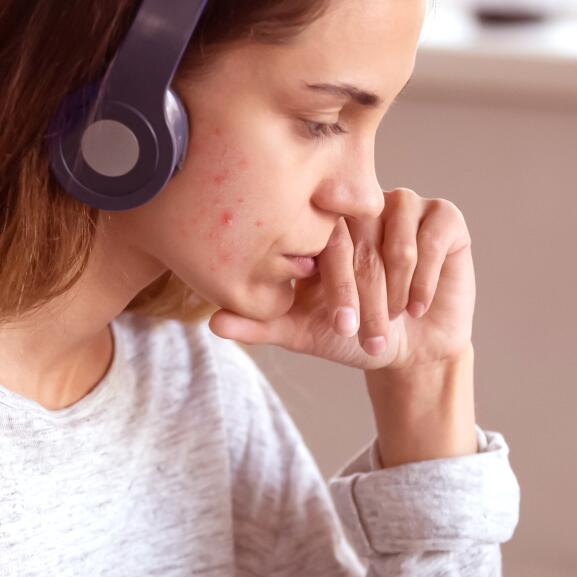The different types of acne
The different types of acne
Acne can take different forms. Each will depend on the extent of sebum retention, the type of lesions... So, "retentional acne" or "inflammatory acne"? How can you tell them apart? Answering these questions is the first step towards implementing the most appropriate treatment.
Forms of acne: recognising them for better treatment
To get rid of your acne, and before choosing your product (which may not necessarily be adapted), you must know your type of acne. The best person to talk to? Your dermatologist. Their opinion is crucial. Depending on your acne type, but also on your age or stage of progression, they will be able to give you a personalised response and a treatment that is just as suitable.

Retentional acne
Oily and shiny skin, dilated pores, the presence of blackheads or microcysts... Retentional acne is the result of the hyperproduction and accumulation of sebum, but also of the skin's inability to flush it out. This is the initial stage of acne. Since it affects the face (forehead, nose and cheeks, chin), it’s often difficult to live with, because it makes the skin look dull and unsightly. Fortunately, there are treatments available to restore your skin's radiance.
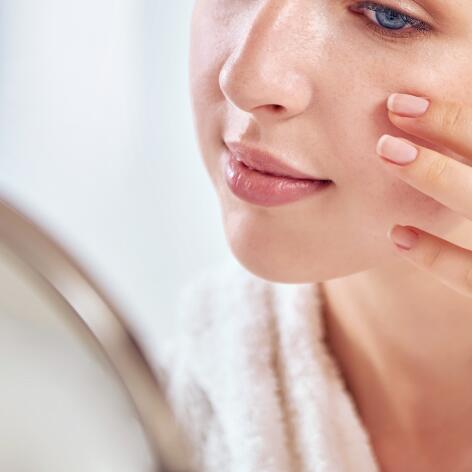
Inflammatory acne
Red raised pimples that are more or less painful (papules) and that go away in a few days or, on the contrary, evolve and turn into pustules... This is inflammatory acne. It’s triggered by an imbalance in the skin's flora, which is conducive to the excessive development of a bacterium naturally present in the sebum: Cutibacterium acnes. Once again, this form of acne can be difficult to deal with. But by adapting your daily hygiene and by strictly observing the treatments prescribed by your dermatologist, you will give your treatment the best chance.
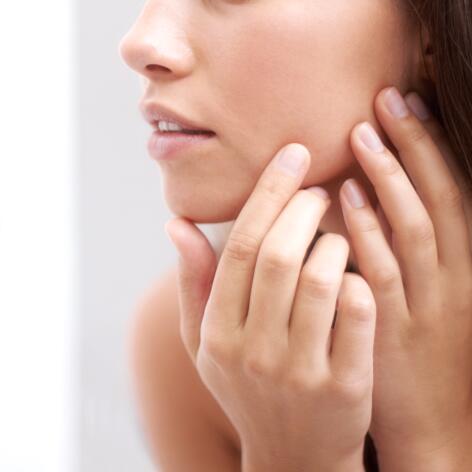
Retentional and inflammatory acne
Often in adolescence, acne is both retentional AND inflammatory. This is the most common form during puberty. This acne is called "polymorphic" or "juvenile polymorphic" because it is characterised by the presence of comedones, but also of inflammatory lesions. It mainly affects the face, chest and back. It can affect self-confidence at an important time in life. Regular dermatological follow-ups (a good understanding and compliance with treatments) is therefore necessary.
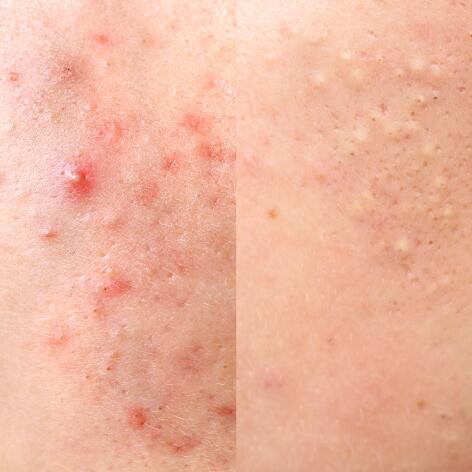
FRIENDLY (AND EXPERT) ADVICE
The main risk of acne is marks and scars being left behind, especially if they affect the face. What can cause these scars? Popping your pimples and other blackheads. Even if it’s tempting, don't abuse your skin in front of the mirror.
Our answers to your questions
To sort the true from the false: that's what we're here for.
Yes, it can. Exposure to the sun can occasionally lead to an improvement in the condition of your skin. UV rays play an anti-inflammatory role, the skin thickens... But in autumn, the skin regains its initial thickness and acne reappears. The result is a resurgence of retentional lesions.
This is true, mainly in women. The risk factors are the same as in teenagers, with hormonal variations the main cause. However, the clinical aspect is different. Adult acne more commonly affects the lower half of the face (jaw and chin) and is characterised by inflammatory lesions.
Again, this is true. The mistake would be to think that by regularly "stripping" the skin with a scrub, you will make the shine and irregularities disappear. Excessive scrubbing can actually increase the inflammation of the epidermis, which will react by secreting more sebum.
Our solutions for taking care of your acne-prone skin
Our Cleanance skin care products are designed to reconcile you with your skin
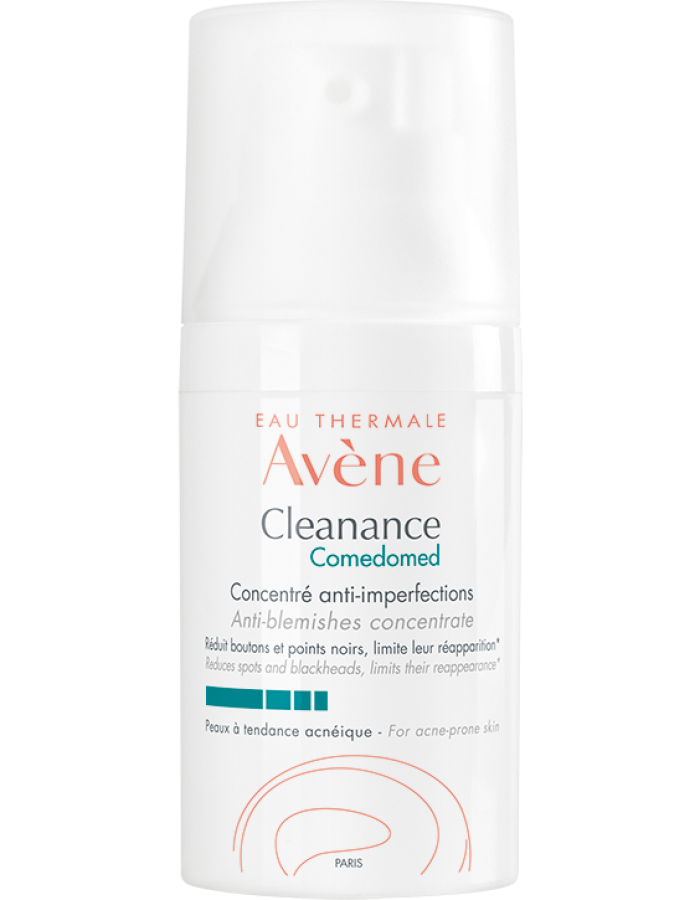
Cleanance Comedomed Anti-Blemish Concentrate
I have been using this product for 1 week and frankly I can already see improvements. I like the texture and the easy-to-use bottle. The smell is surprising at first but you get used to it quickly. I recommend this product for teenagers or adults who have skin problems.
Stéphanie, 38 years old
MORE
NEWSLETTER
We’re always here for your skin!
All our tips for taking care of your skin day to day.
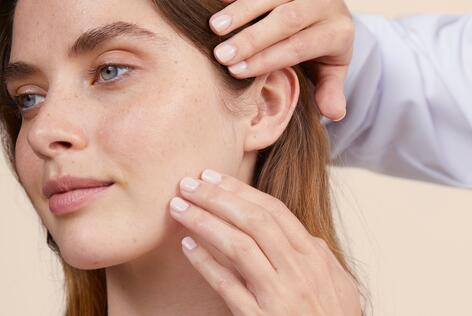
Which skin care routine should you adopt?
Identify what it really needs with the help of our experts and discover the most suitable skin care routine for you.

